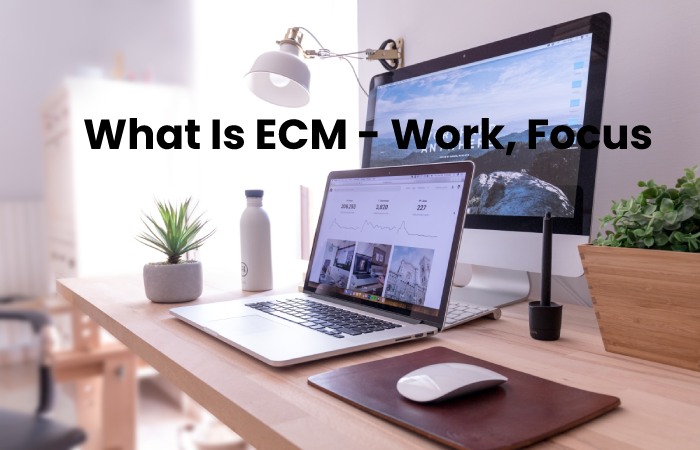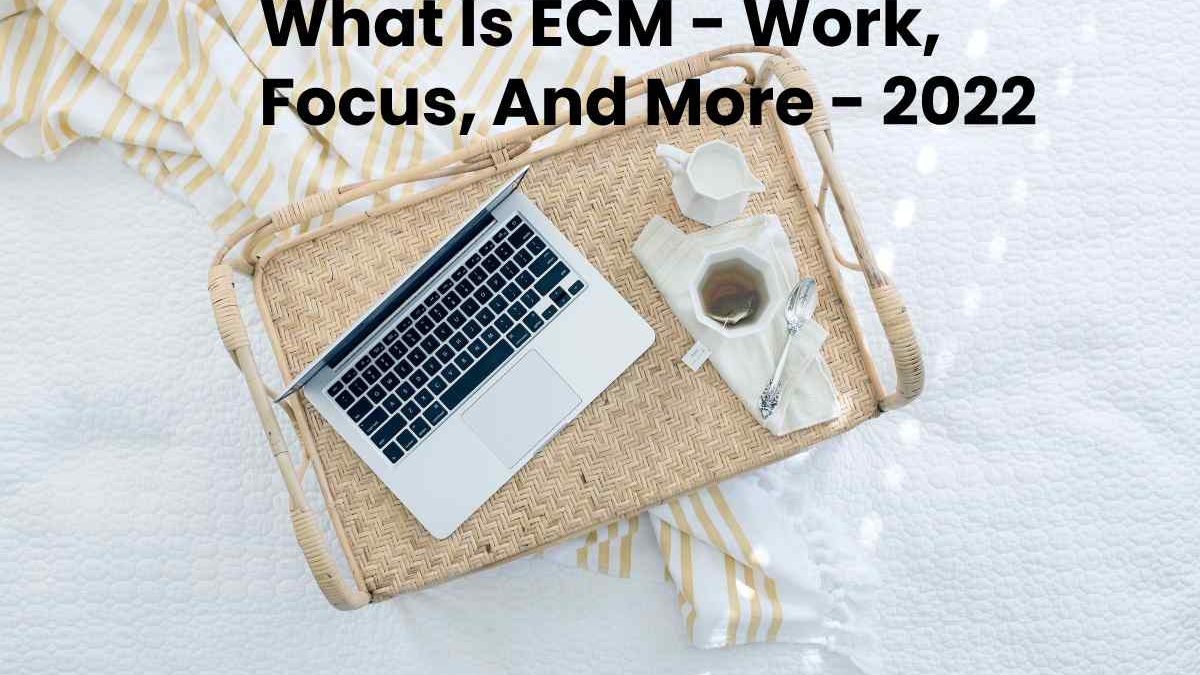ECM is a strategic information gathering and organization system. The acronym can be translated as Business Content Management, and it is about technological solutions that manage the entire life cycle of the different information of the companies.

Thanks to this type of technology, it is possible to guarantee greater productivity since the data is collected for the specificities of each audience.
Now that you know what the acronym ECM means, it is essential to point out that this management involves a technological solution. Still, it goes beyond software: it encompasses a systematized strategy and organization, with really effective methods to take advantage of the information.
Table of Contents
How Does It Work, And What Is The Main Focus Of ECM?
The main focus of ECM is to optimize the management of documents and information throughout their life cycle.
The documents are indexed from previously defined fields – which will also be the form of access after storage – and are stored in a robust database managed by an ECM technology solution.
Enterprise Content Management works based on access rules and allows integration with other systems to improve the results of the different areas of the business, including process management and marketing.
Much More Than Electronic Document Management – GED
When we talk about document management, many people instantly think of GED – Electronic Document Management.
A GED is a set of technological systems that capture, process, store, index, share and support corporate documents. It makes file access more accessible and more secure.
But then, what is the difference between GED and NDE? We can say that ECM is an evolution of GED.
While the GED system deals specifically with document management, ECM can work together with other tools and optimize the company’s control, focusing on Business Intelligence.
In addition, the GED system performs the organization according to each department, while the ECM system has a global presence. Other points of change between the two are also worth noting:
- The GED had little or no way to parameterize it, while the ECM has a more open and modular architecture.
- The ECM allows the management of different types of content and media, including CAD, images, videos and other files.
- The ECM system allows the capture and reading of the file through optical character recognition for automatically highlighting the most critical points.
- applied to the storage of documents, the GED system evolved into the ECM and ensured broader functions, covering all company sectors.
The Five Elements Of The ECM System
You already know that the main focus of ECM is data optimization, but do you know the elements of ECM? In general, it works from 5 main features:
Capture
The first element of the ECM refers to the capture of information in its most diverse forms:
- Bills
- receipts
- Reports
- statistics
- Spreadsheets
- Contracts
- company plans
- Forms
- online content
- scanned files
- Application data
- Among other
When the amount of data captured is vast, it is vital to structure the files systematically, simplify the query and optimize their use.
To Stock
How are files stored in your company? According to the ECM’s methodology, the data must be assigned to a single and standardized source, avoiding duplicates.
This repository needs regular backups and constant updating. Ensures that information is secure, mitigates the risk of loss, and allows users to access the latest version.
Storage can be organized in folders, with hierarchies of information and different types of access. After all, data is only valuable if used effectively in business.
Manage
In ECM, information management has three types of classification:
- Connect
- Modify
- use information
In this element, the software is essential, especially if it is placed in the cloud. That way, people can access information remotely, from a computer, cell phone, or another device with authorized access.
Preserve
Data has become one of the most critical assets of a company. Therefore, it is highly relevant to ensure that the information collect is protect and kept securely.
The data must have access passwords and two-factor authentication, encryption, And also other security steps to ensure that it is fully well-preserve.
Deliver
Lastly, you need to make sure your data gets to the right people in a simple and accessible way. Must organize folders in a structured and logical manner.
Can integrate The information repository with other platforms to execute certain routines automatically
Essential Components of the ECM
It is already clear what it means and the focus of the ECM, but how does it perform all these tasks and ensure sound management of business information?
The ECM platforms have different tools that facilitate the performance of various activities in the organization’s day today. Get to know the main ones:
- Optical Character Recognition – As well know as OCR, Optical Character Recognition allows documents to be scan for capture and classification. In this way, And also it is possible to transform text from images into an editable document.
- Digital Signature: Global partnerships, telecommuting, and the demand for paper savings make the digital signature a vital component of ECM. This solution allows the signing of documents online, without printing and in an effortless way.
- Create forms and fields: Create forms with custom fields, And also to meet business specifications.
- Templates: ECM software allows metadata definition for different groups of files. In this way, the user parameterizes the characteristics of the documents to extract data according to the established objective.
- Version Control: This feature records all versions of a document. Thus, it is possible to monitor the history of changes and identify the author and the exact moment of the shift, exclusion or inclusion of information.
- Full-Text Search – This tool allows you to perform a full-text search on documents. In practice, the user can search for a file, based on a word of its content, without opening each document, speeding up the process.
- Read the main types of files on the market: The ECM reads different files, including MS Office, PDF, graphic files, MODCA, PTOCA, TXT and RTF, among others.

